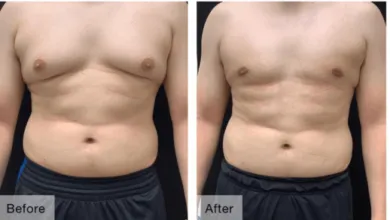
In the bustling cities of Fort Worth and Dallas, amidst the rush of daily life, individuals seek solace in various wellness practices to alleviate stress and improve their overall health. Among these practices, Rolfing ft worth has gained significant popularity as a holistic approach to well-being. But what exactly is Rolfing, and how does it contribute to a healthier lifestyle?
What is Rolfing?
Rolfing, also known as Structural Integration, is a form of alternative therapy that focuses on realigning and balancing the body’s structure. Developed by Dr. Ida Rolf in the mid-20th century, Rolfing aims to address chronic pain, improve posture, and enhance flexibility by manipulating the body’s connective tissues, known as fascia.
Importance of Rolfing
Unlike conventional massage therapy that primarily targets muscle relaxation, Rolfing delves deeper into the body’s structural alignment. By releasing tension and restrictions within the fascia, Rolfing promotes long-term changes in posture and movement patterns, leading to improved overall well-being.
Benefits of Rolfing
The benefits of rolfing dallas extend beyond mere relaxation, offering individuals a pathway to holistic wellness.
Pain Relief
Chronic pain, whether stemming from poor posture, injury, or repetitive strain, can significantly impact daily life. Rolfing addresses the root cause of pain by releasing tight fascia and restoring balance to the body, providing lasting relief without reliance on medication.
Improved Posture
In today’s sedentary lifestyle, maintaining proper posture can be challenging. Rolfing helps realign the body’s structure, allowing individuals to stand taller, move more freely, and alleviate strain on muscles and joints.
Enhanced Flexibility
Restricted fascia can limit range of motion and flexibility. Through targeted manipulation and movement education, Rolfing enhances flexibility, enabling individuals to move with greater ease and fluidity.
Difference between Rolfing and Massage Therapy
While Rolfing and massage therapy share some similarities, they differ in their approach and goals.
Approach
Massage therapy primarily focuses on relaxing muscles and relieving tension through various techniques such as kneading and stroking. In contrast, Rolfing targets the body’s deeper layers, addressing structural imbalances and promoting optimal alignment.
Goals
While both aim to improve overall well-being, Rolfing emphasizes long-term structural changes, whereas massage therapy offers immediate relief from muscular tension and stress.
What to Expect During a Rolfing Session
Curious about trying Rolfing but unsure of what to expect during a session? Here’s a brief overview:
Initial Assessment
Before beginning Rolfing sessions, practitioners typically conduct a thorough assessment to understand the client’s needs, medical history, and areas of concern.
Hands-on Manipulation
During the session, the practitioner uses hands-on manipulation techniques to release tension and realign the body’s structure. This may involve applying pressure to specific areas or guiding the client through movement sequences.
Integration
Following the hands-on work, clients are often given movement exercises or ergonomic adjustments to integrate the changes made during the session into their daily lives.
Finding a Rolfing Practitioner
Choosing the right Rolfing practitioner is essential for a positive experience. Here are some tips for finding a qualified professional:
Research
Take the time to research Rolfing practitioners in your area, paying attention to their credentials, experience, and approach to therapy.
Reviews
Read reviews and testimonials from previous clients to gauge the practitioner’s reputation and the effectiveness of their treatments.
Experience
Look for practitioners with extensive experience and a track record of helping clients achieve their wellness goals through Rolfing.
Rolfing in Fort Worth and Dallas
Fortunately, residents of Fort Worth and Dallas have access to a variety of Rolfing practitioners and wellness centers.
Availability
Rolfing sessions are readily available throughout the cities, with many practitioners offering flexible scheduling to accommodate busy lifestyles.
Notable Practitioners
Several renowned Rolfing practitioners call Fort Worth and Dallas home, each bringing their unique approach and expertise to the practice.
Cost
While the cost of Rolfing sessions may vary depending on the practitioner and location, many individuals find the investment worthwhile considering the long-term benefits to their health and well-being.
Testimonials
Still unsure if Rolfing is right for you? Hear from individuals who have experienced the transformative effects firsthand.
Client Experiences
Many clients report significant improvements in posture, pain relief, and overall quality of life after undergoing Rolfing sessions.
Success Stories
From athletes seeking performance enhancement to office workers combating chronic pain, Rolfing has helped people from all walks of life achieve their wellness goals.
Frequently Asked Questions
What is the duration of a typical Rolfing session?
Rolfing sessions typically last between 60 to 90 minutes, although the duration may vary depending on the practitioner and the client’s needs.
Is Rolfing painful?
While some discomfort may occur during Rolfing sessions, it is usually mild and temporary. The goal is to address underlying structural issues without causing unnecessary pain.
How many sessions are recommended?
The number of Rolfing sessions recommended varies depending on the individual’s goals and the severity of their structural imbalances. However, most practitioners suggest a series of 10 sessions for comprehensive results.
Can Rolfing help with chronic pain?
Yes, Rolfing has been shown to effectively alleviate chronic pain by addressing its root causes and promoting structural alignment.
Is Rolfing suitable for everyone?
While Rolfing is generally safe for most individuals, it may not be suitable for certain medical conditions or injuries. It’s essential to consult with a qualified practitioner to determine if Rolfing is right for you.
Conclusion
In conclusion, Rolfing offers a unique approach to wellness that goes beyond traditional massage therapy. By addressing the body’s structural imbalances and promoting optimal alignment, Rolfing provides lasting relief from pain, improved posture, and enhanced flexibility. Whether you’re a seasoned athlete or a desk-bound professional, exploring the benefits of Rolfing could be the key to unlocking your full potential for wellness.





